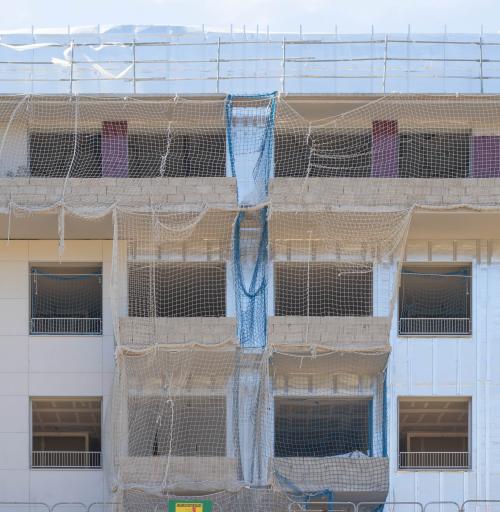Reflective rain screen façade (181)
This case would be quite an ordinary rain screen façade with a lightweight steel frame main wall and a cladding, if it were not for the reflective membrane. This layer achieves air-tightness all around the building and moisture protection of the main wall, allowing the exterior board not to be a cement board, as is the standardised Knauf system. Moreover, it has a thermal influence on the envelope: the low infrared emissivity of the aluminium foil reduces the radiating energy flow between the surfaces of the ventilated cavity, which can be an important energy exchange, especially in sunny summer façades.
Reflective sheets are a thermal insulation system that, optimally, should be located adjacent to non-ventilated air cavities. The stationary air provides thermal resistance due to its low conduction, while the reflective sheet reduces the infrared radiative exchange between the surfaces of the cavity, thus increasing the insulating power of the system.
In this case, the air cavity is necessary due to the water-tightness strategy (drained cavity). Hence, the addition of this reflective sheet increases the thermal resistance of the façade without increasing its thickness. Even so, implementing an insulating material is still necessary to meet the required thermal transmittance.
The durability of the sheet in the thermal, humidity and dust conditions of the drained cavity must be taken into account. Especially how they affect the infrared emissivity value of the surface. Note that in general, these products are designed for non-ventilated cavities, and therefore they are more protected against these aggressions.
In conclusion, not only this reflective layer is used as both air-tightness and moisture protection of the main wall, but it is also a thermal insulation upgrade without adding width. This is a clear example of making the most of one product.
88 dwellings on Pallars Street
Marta Martin

















